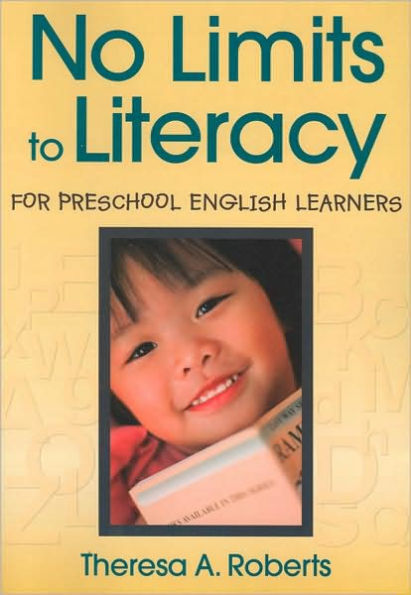Table of Contents
AcknowledgmentsAbout the AuthorIntroduction1. Resources English Language Learners Bring to Literacy LearningThe Language and Literacy WellspringThe Emotional WellspringThe Motivational WellspringThe Family WellspringThe Cultural WellspringConclusion2. Building On and Scaffolding With Primary LanguageWhy Support Children's Primary Language?Primary Language and Literacy AchievementAdding Some Magic: Metacognitive BenefitsBeyond the Words: Social-Emotional Aspects of Primary LanguageWhat Happens to the Primary Language When Children Enter Preschool?Using Primary Language for Social Communication and Social-Emotional PurposesBenefits of Using Primary Language for Literacy LearningPrimary Language ResourcesPractices for Supporting Primary Language at HomeDifferent Primary Language ProgramsSpending "Time on Task" in EnglishPatience in Achieving BilingualismConclusion3. Oral Language Development in a Second LanguageSecond Language Learning in Naturalistic SettingsSecond Language Learning in Preschool SettingsExamining the Silent or Receptive Stage in Second Language AcquisitionLearning About Language Acquisition From CaregiversCultural Variations in Caregiver Speech and a Challenge for EducatorsLanguage for Basic Communication and Academic LearningHow Children Learn the Meaning of WordsLearning Words From InstructionThe Relationship Between Oral Language and Second Language LiteracyClassroom Contexts for Language DevelopmentThe Wonder and Limits of Storybook ReadingConversations With ChildrenLanguage Development During Center TimeTalking-Up Routines and TransitionsMealtime Opportunities for TalkingLanguage and Literacy Enhanced PlayTeacher Oral Language: An Elephant in the RoomHome Influences on Second Language LearningConclusion4. Befriending the Alphabet: Why and HowCan Children With Limited Knowledge of English Learn the English Alphabet?Why Explicit Instruction Is BeneficialGoing Deeper Into the AlphabetShould Letter Names or Letter Sounds be Taught First?How Should the Uppercase and Lowercase Letters be Taught?Learning Personal NamesMaking the Connection Between Letters and Meaningful Printed WordsWriting Helps Children Learn the AlphabetTeaching the Alphabet in a Language Other Than EnglishHow Much Letter Instruction Is Needed?Conclusion5. Sounds in Words: Phonological AwarenessWhat is Phonological Awareness?Words: The Foundation of Phonological AwarenessUnnatural Aspects of Phonological AwarenessPreschool Phonological Awareness and Later ReadingCan Preschool Children Learn Phonological Awareness?Connections Between L1 and L2 Phonological AwarenessLearning Phonological Awareness in a Second LanguageThe Joined Hands of Vocabulary and the AlphabetDoes Second Language Pronunciation Matter?How Much Phonological Awareness Do Preschool English Learners Need?What's Up With Rhyming?Making Sounds Stand Still and Be ConcreteThe Language Used in Phonological Awareness InstructionConclusion6. Curriculum, Instruction, and Literacy ActivityEssential Elements of an Effective CurriculumAn Articulated CurriculumMatching Goals With Teaching Strategies/ActivitiesThe Language of InstructionBuilding Relationships While Fostering LiteracyTeachers' Support and Instructional RolesThe Value of Small Groups and One-one-One TeachingIncreasing Opportunities for Teachers' Support RoleThe Language of Relationship BuildingThe Benefits of Explicit InstructionHigh-Quality Teaching and LearningChild Choice and Literacy InstructionUsing Assessment to Benefit ChildrenTeachers: The Critical IngredientProgram and Instruction EvaluationsChallenges for Moving ForwardConclusion7. Engaging Family CaregiversCreate an AllianceFocus on Language and LiteracyThinking Processes and Positive Relationships Working TogetherHome Emotional Support for LiteracyHome Cognitive Support for LiteracyFamily Responsive and Family Tailored ApproachesTeacher Influences on Family EngagementFamily Caregivers and Children Reading TogetherFamily Caregivers and Children Playfully Solving Problems TogetherEngaging Family Caregivers in the ClassroomOne Model for Engaging FamiliesHigh-Quality Family Engagement PracticesConclusion8. Motivation for LiteracyCharacteristics of Motivated ChildrenAre All Preschool Children Highly Motivated for Literacy?Linkages Between Preschool Motivation and Later ReadingThe Need for Competence and Mastery-Inside Every ChildEffectance Motivation Theory Moves ForwardThe Motivational Link Between Thinking and EmotionMastery and Performance OrientationsThree Motivational Needs (Competence, Autonomy, Relatedness)The Compatibility of Autonomy and StructureThe Special Worry of FailureDoes Explicit Instruction Undermine Motivation?Culture, Language and Motivation for LiteracyThe Language of MotivationHome Influences on Language and Literacy MotivationConclusionReferencesIndex










